Waste Clearance in Commercial Waste Collection
Understanding Commercial Waste Clearance
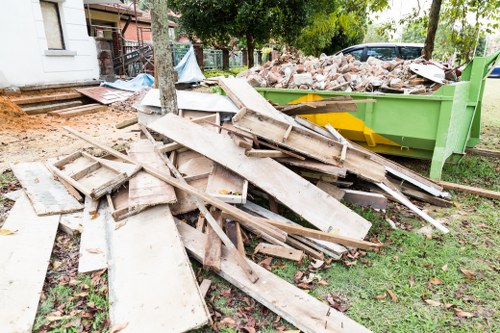
Commercial waste clearance is a critical service that ensures businesses maintain a clean and sustainable environment. Efficient waste management not only complies with regulations but also enhances the overall operational efficiency of a business. Proper waste clearance involves the systematic collection, transportation, and disposal of waste materials generated by commercial establishments.
Businesses of all sizes produce waste, ranging from office paper to industrial byproducts. Without an effective waste clearance system, companies risk accumulating large amounts of waste, which can lead to health hazards, environmental damage, and a tarnished reputation.
Implementing a robust commercial waste clearance plan is essential for minimizing the negative impacts of waste on both the environment and the business itself. This involves selecting the right waste collection services, adhering to legal requirements, and promoting sustainable practices within the organization.
The Importance of Efficient Waste Collection
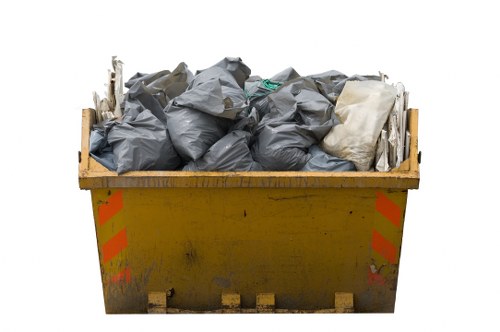
Efficient waste collection plays a pivotal role in maintaining a clean and healthy workplace. It ensures that waste is removed promptly, reducing the risk of contamination and pest infestations. Additionally, proper waste management contributes to the preservation of natural resources by promoting recycling and reducing landfill usage.
For businesses, efficient waste collection can lead to cost savings through optimized waste handling processes and potential revenue from recyclable materials. Moreover, it enhances the company’s image, showcasing a commitment to environmental responsibility.
Regulatory compliance is another significant aspect of efficient waste collection. Governments and local authorities have established strict guidelines for waste disposal, and non-compliance can result in hefty fines and legal issues. Therefore, partnering with a reliable waste clearance service ensures that businesses adhere to all necessary regulations.
Types of Commercial Waste
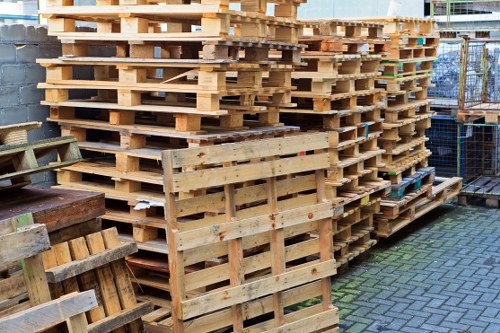
Commercial waste can be categorized into several types, each requiring specific handling and disposal methods. Understanding these categories is crucial for effective waste clearance.
1. General Waste
General waste includes everyday items such as office paper, packaging materials, and non-recyclable plastics. Proper segregation of general waste is essential to facilitate efficient disposal and recycling processes.
2. Recyclable Waste
Recyclable waste comprises materials that can be processed and reused, such as paper, cardboard, glass, metals, and certain plastics. Effective recycling programs can significantly reduce the environmental footprint of a business.
3. Hazardous Waste
Hazardous waste consists of substances that are dangerous or potentially harmful to health and the environment. This category includes chemicals, batteries, electronic waste, and medical waste. Specialized handling and disposal procedures are required to manage hazardous waste safely.
Best Practices for Waste Clearance
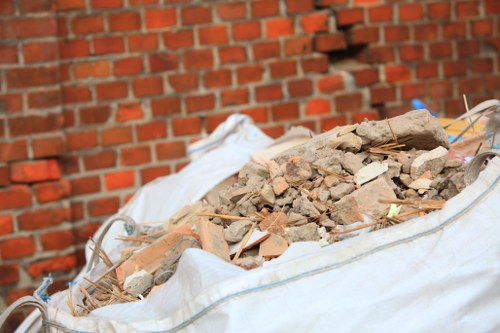
Implementing best practices in waste clearance can enhance efficiency and sustainability. Here are some strategies businesses can adopt:
- Segregate Waste: Properly separating waste into categories such as general, recyclable, and hazardous ensures that each type is handled appropriately.
- Reduce Waste Generation: Minimizing waste production through efficient processes and mindful consumption helps in reducing the overall waste burden.
- Promote Recycling: Encouraging recycling within the workplace can significantly decrease the amount of waste sent to landfills.
- Use Eco-Friendly Products: Opting for sustainable materials and products reduces the environmental impact and supports waste reduction efforts.
- Partner with Reliable Waste Services: Collaborating with experienced waste clearance providers ensures timely and compliant waste management.
By adopting these practices, businesses can not only comply with regulations but also contribute positively to environmental conservation.
Choosing the Right Waste Clearance Service
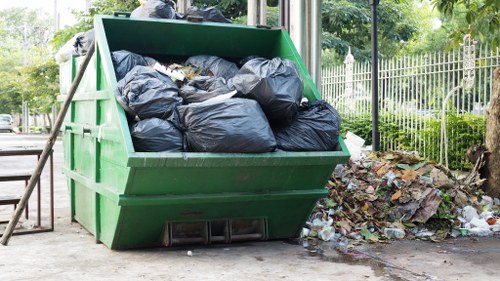
Selecting a dependable waste clearance service is paramount for effective commercial waste management. Here are key factors to consider when making this decision:
- Experience and Expertise: Choose a service provider with extensive experience in handling various types of commercial waste.
- Compliance with Regulations: Ensure that the provider adheres to all local and national waste management regulations.
- Comprehensive Services: Opt for companies that offer a full range of services, including waste collection, transportation, recycling, and disposal.
- Customer Support: Reliable customer service is essential for addressing any concerns and ensuring smooth operations.
- Cost-Effectiveness: Evaluate the pricing structure to ensure that it aligns with your budget while providing quality services.
Making an informed choice in selecting a waste clearance partner can lead to more efficient waste management and support your business’s sustainability goals.
Benefits of Professional Waste Clearance
Engaging professional waste clearance services offers numerous advantages for businesses:
- Enhanced Efficiency: Professionals utilize optimized processes and equipment to handle waste swiftly and effectively.
- Environmental Protection: Proper waste management reduces pollution, conserves resources, and promotes recycling, contributing to a healthier planet.
- Cost Savings: Efficient waste handling can lower disposal costs and even generate additional revenue through recycling initiatives.
- Regulatory Compliance: Professional services ensure that your business meets all legal requirements, avoiding potential fines and penalties.
- Improved Workplace Safety: Proper waste management minimizes health hazards, creating a safer work environment for employees.
These benefits collectively support the long-term success and sustainability of a business.
Implementing a Sustainable Waste Management Plan
Developing a sustainable waste management plan is essential for businesses aiming to reduce their environmental impact. Here are steps to create an effective plan:
Assess Your Waste Generation
Begin by evaluating the types and quantities of waste your business generates. This assessment will help identify areas where waste reduction is possible.
Set Clear Goals
Establish specific, measurable goals for waste reduction, recycling, and sustainable disposal. These goals will guide your waste management strategies.
Educate and Involve Employees
Promote awareness and participation among employees by providing training and resources on proper waste handling and sustainability practices.
Optimize Waste Collection Processes
Streamline waste collection schedules and methods to ensure timely and efficient removal of waste, reducing the risk of accumulation and contamination.
Monitor and Review
Regularly review your waste management plan’s effectiveness and make necessary adjustments to improve performance and achieve your sustainability goals.
The Role of Technology in Waste Clearance
Advancements in technology have significantly enhanced waste clearance processes. Innovative solutions are making waste management more efficient, accurate, and environmentally friendly.
Automated Waste Collection Systems
Automated systems streamline the collection process, reducing labor costs and minimizing human error. These systems can schedule pickups based on real-time data, ensuring optimal efficiency.
Waste Tracking Software
Comprehensive waste tracking software allows businesses to monitor their waste generation and disposal activities. This data-driven approach facilitates better decision-making and helps in meeting regulatory requirements.
Recycling Technologies
Advanced recycling technologies improve the quality and quantity of recycled materials, making recycling more viable and economically beneficial for businesses.
Overcoming Challenges in Waste Clearance
Effective waste clearance comes with its set of challenges. Identifying and addressing these obstacles is crucial for maintaining a smooth waste management process.
High Volume of Waste
Handling large volumes of waste can strain existing resources and infrastructure. Investing in scalable waste management solutions can help accommodate growing waste needs.
Compliance with Regulations
Navigating complex waste disposal regulations requires expertise. Partnering with knowledgeable waste clearance services ensures adherence to all legal requirements.
Cost Management
Balancing effective waste management with budget constraints can be challenging. Exploring cost-effective strategies such as waste reduction and recycling can mitigate expenses.
Future Trends in Commercial Waste Collection
The landscape of commercial waste collection is evolving with emerging trends aimed at enhancing sustainability and efficiency.
Increased Focus on Circular Economy
The circular economy model emphasizes the reuse and recycling of materials, reducing the need for new resources and minimizing waste generation.
Integration of AI and Machine Learning
Artificial intelligence and machine learning are being integrated into waste management systems to predict waste generation patterns and optimize collection routes.
Adoption of Green Technologies
Green technologies, such as electric waste collection vehicles and energy-efficient recycling processes, are becoming more prevalent, contributing to reduced carbon footprints.
Conclusion
Waste clearance in commercial waste collection is an indispensable aspect of modern business operations. By implementing effective waste management strategies, businesses can achieve regulatory compliance, reduce environmental impact, and enhance operational efficiency.
Partnering with professional waste clearance services, adopting sustainable practices, and leveraging advanced technologies are key steps toward a more sustainable and efficient waste management system.
Contact us today to learn more about our comprehensive commercial waste clearance solutions and take the first step towards a cleaner, greener business environment.